NASCAR Has a Major Loose Wheel Nut Problem
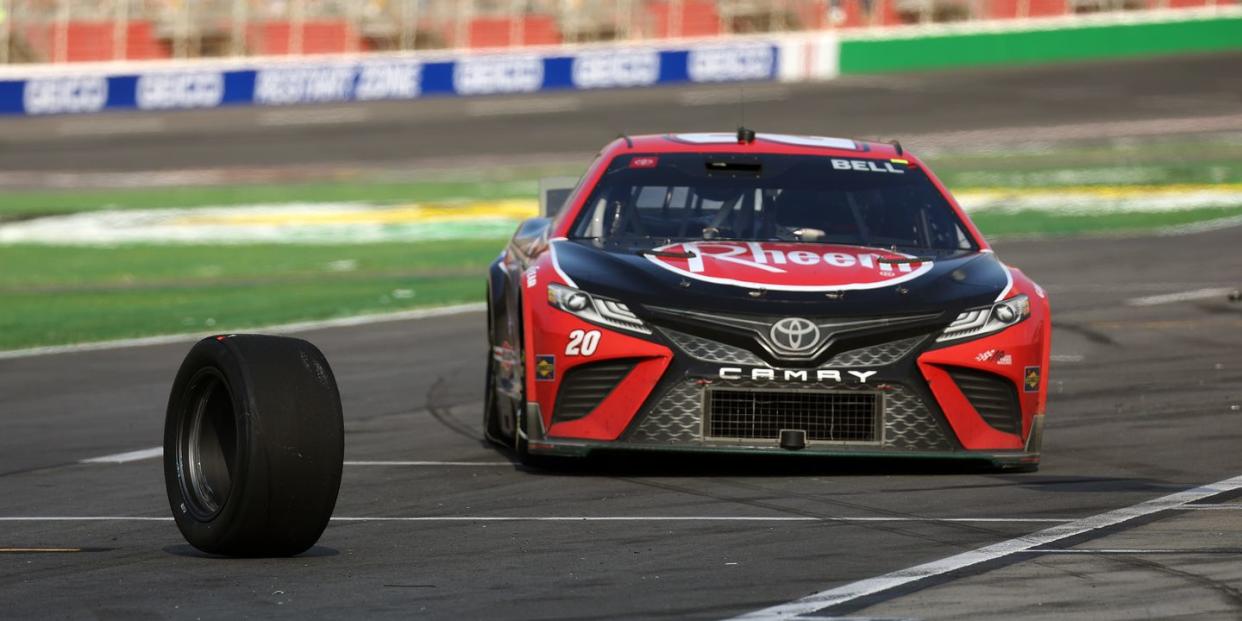
When the NASCAR Cup Series introduced its revolutionary new “Next Gen” race car this year, a lot of things changed. That included a new transmission, independent rear suspension, and 18-inch wheels fastened by a large single lug nut instead of five smaller ones. The introduction of single lug wheels to the NASCAR Cup Series has resulted in significantly faster pit stops but also more frequent occurrences of loose wheels.
The Cup Series employed five-lug wheels on the previous-generation car that could still stay on the car if a tire changer had just three of them torqued down. The new single-lug wheel on the Next Gen car allows a tire changer only one chance to make sure that a wheel is tight. There are a lot of variables at play as to why we have seen so many loose wheels and that ranges from the design of the components on the Next Gen car to the sheer speed that these pit crews are moving at during a typical pit stop.
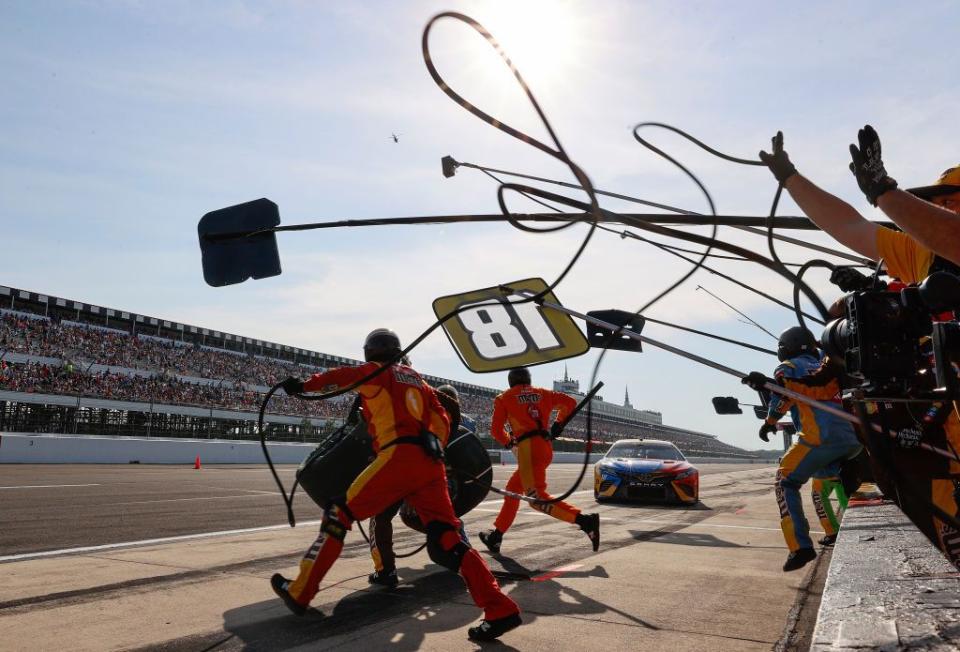
Five-lug pit stops have been perfected over the years as teams figured out how to be efficient and bring down the average pit stop time for a four tire change into the 13 second range, but the introduction of single-lug wheels changed that dramatically as teams are averaging four tire changes in the 10 second range and some have even dipped down into the eights with the No. 18 crew of Kyle Busch completing a four tire change at Kansas Speedway in 8.96 seconds in May. One of the biggest gains in these pit stops is how quickly tire changers move now as Justin Fiedler, who is the rear tire changer of the No. 43 of Erik Jones shared in May on Twitter stating that “From the time I'm engaged on the nut, to the swap of tires, to the nut being tight again is about 2.5 seconds. As a comparison, that is probably 2 seconds faster than a 5 lug stop. So there is much less time to make decisions. You better be confident it's tight before you leave.”
These pit stops are extremely fast and each operation for a specific corner of a car only takes fractions of a second, so there is very little room for mistakes and everyone has to be synced up. While many of these crew members have over a decade of experience with five-lug wheel guns and choreography, single-lug changes are all new and those wheel gun act in a much different manner, as my colleague Alanis King wrote recently in her visit to pit crew training at Joe Gibbs Racing, “Many things can ruin a pit stop, including misaligning the gun’s tiny teeth with the lug or instinctively pulling on it while loosening the wheel. I did that often.”
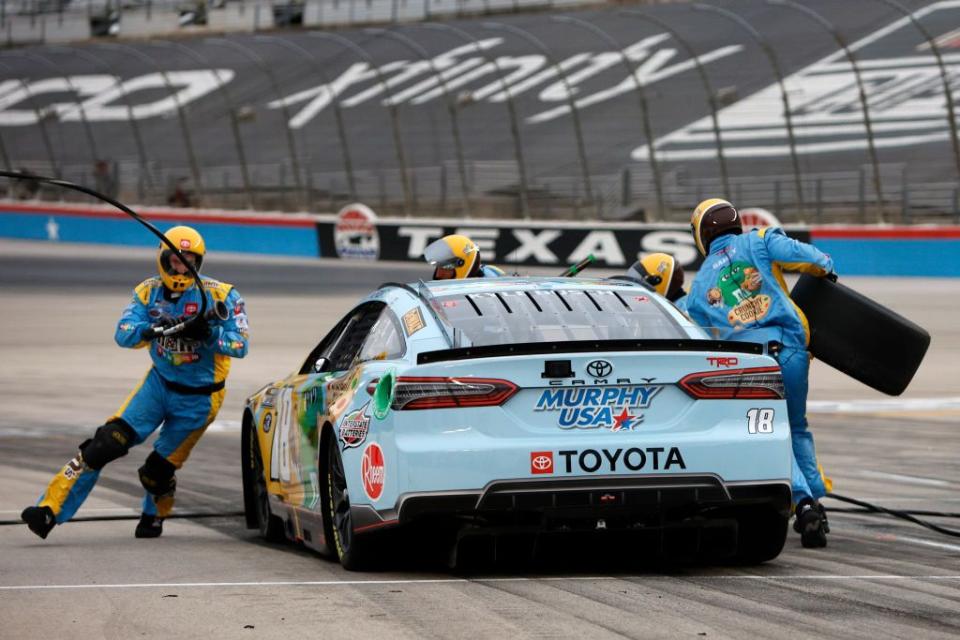
Pit stops involve a highly precise choreography and as wheel on and off times have been cut in half with the new wheel nuts, tire carriers and jack handlers now have to adapt and speed up in order to get the car out as quickly as possible. The choreography not only involves the pit crew but also the driver who must position the car precisely in the box and then be ready to take off as soon as the jack is dropped. This is also where many of the issue have come into play, as jack handlers have sped up in order to meet the speed of the tire changers, this has left very little margin for error so when a tire changer has an issue with a wheel being tight and has no way to signal the jack handler, the jack might get dropped before the wheel nut is fully on and result in the driver taking off and eventually losing the wheel.
When the choreography works as intended everything moves at an incredible pace and the crewmembers running around the car are often able to change all four tires before the ten second mark but if there is an issue with either of the wheel nuts on the inside tire change and the jack is dropped they could be left with a loose wheel. While we know where the disconnect typically lies that results in a loose wheel, the reasoning behind the hold up on the tire change can be related to a variety of reasons from mechanical issues to performance issues from the changer.
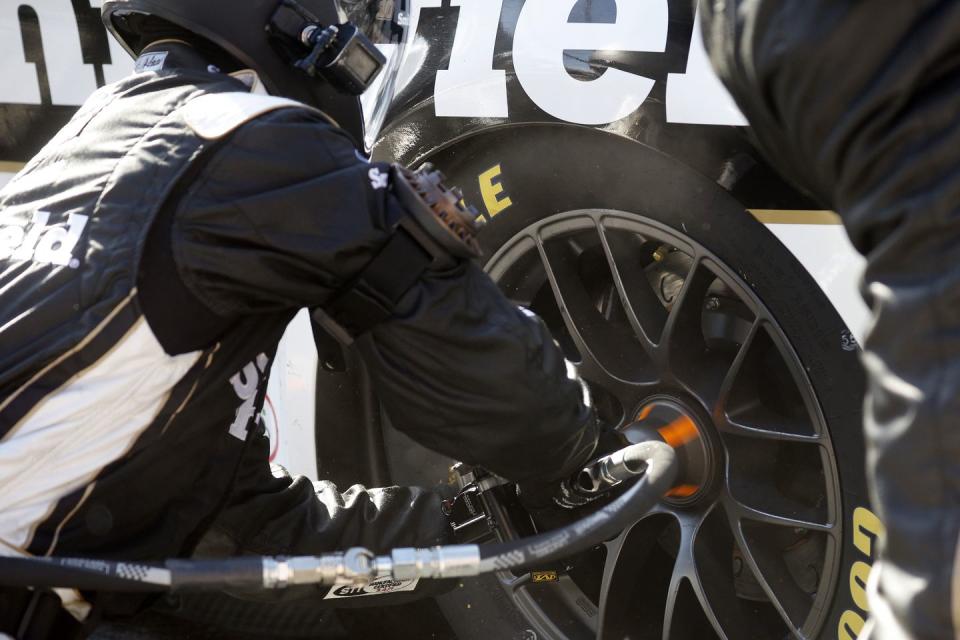
The components involved in a tire change are all spec parts that are purchased from vendors specified by NASCAR and designed under the supervision of the NASCAR R&D department. It's up to teams themselves to adapt to the parts that they are allowed to purchase. Components such as the hub, wheel, and wheel nut all come from spec vendors and as they are all newly designed parts they have showed some growing pains and issues that have resulted in them being harder to fasten or loosen. One of the earliest issues that popped was interference from the drive pins on the hub to the drive pin holes on the back of the wheel. These drive pins are what allow wheel to be aligned to the hub before they are fastened and if they are not fully seated then the wheel cannot be fully torqued down. NASCAR eventually allowed teams to machine the parts so that wheels could seat better and that resolved some of the issues there.
The hub snout that the center bore of the wheel slide over also has detents that stick out and they are sprung and designed to pop in as the wheel and wheel nut go over them and then pop out once the wheel nut is tightened to act as a guard if the wheel nut start to come loose, but in many cases these detents have malfunctioned resulting in stuck wheel nuts or other related issues.
Not only are the parts on the car from vendors specified by NASCAR, but even the wheel guns themselves are not under the control of the teams. The wheel guns come from a spec vendor who controls their distribution at the race track, handing them out to teams before a race and then collecting them afterwards. The vendor is in charge of maintaining all of the wheel guns and the sockets between races and while they are typically on top of maintenance any issues that might pop up are harder to catch if you have to maintain dozens of wheel guns versus a handful. The wheel guns themselves are typically pretty durable but the sockets rely on magnets to grab the wheel nut from the car as a wheel is taken off along with an o-ring that is inside the socket and has an interference fit. In some cases, wear on the socket or any of its components can result in it not seating properly on the wheel nut resulting in a tire change that can be slowed down and a wheel nut that could possibly be missed.
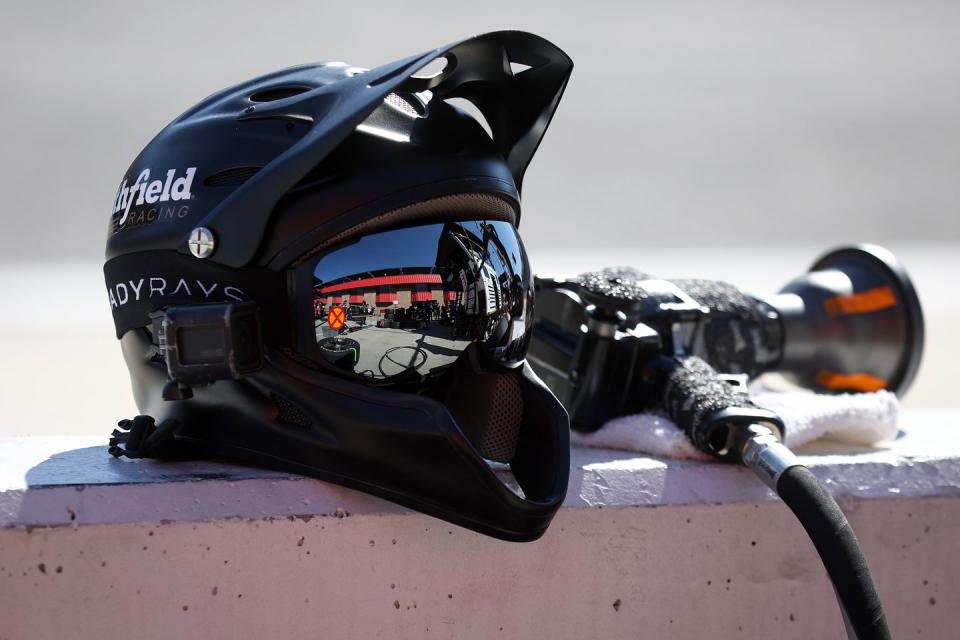
These issues are compounded by the fact that NASCAR pit crews don’t typically get to practice with the exact equipment they will be using in the race as this equipment is handed out to them at the race track so any issues that might be found is unlikely to be noticed until the first live pit stop of a race. This is different in many other series including the NASCAR-owned IMSA series where I myself work as a pit crew member. There, we own all of the pit equipment and practice with it at the track prior to a race. Many IMSA teams use wheel guns that are similar to those used in NASCAR that come from Paoli, but one of the big differences is that not only do IMSA teams own their own wheel guns and sockets, they are also allowed to service them and replace magnets or even adjust them for how tightly they grab a socket. None of this is permitted on the NASCAR side.
While NASCAR crews have less control over their equipment, the penalties are typically harsher than what is found in many other series where a loose wheel will typically result in a warning the first time that it happens. A loose wheel in a NASCAR race typically means that a crew chief and two crew members can be suspended for four races, likely why loose wheels have received so much publicity in NASCAR this year. Loose wheels occasionally happen in other series, but are not typically a focus of the race broadcasts. They don’t carry such large penalties, and in turn haven’t received as much attention from fans in those series.
What's interesting is that the current penalties have been simply transferred over from the five-lug era, when were instituted to prevent teams from leaving one or two of the five lugs loose in order to gain a performance advantage. There is no longer any opportunity to gain an advantage on the wheel nut so many have called for a change in the penalty. Certainly loose wheels can be a safety issue and should be penalized as such, but the circumstances around them have changed while the penalties have not.
The new wheels overhauled pit stops—and six months into the season, NASCAR’s penalty system may finally catch up with its new reality. While the old system suspended a team’s tire changer, jack handler, and crew chief for four weeks in the instance of a loose wheel rolling off of their race car, the new one calls for a one-week suspension and the car to be held for five laps during the race, ineligible to get their laps back via the free pass or wave-around.
Cup Series tire changers spent years perfecting the approach to the old car, whose five lug nuts allowed them room to save time on their wicked-fast, 13-second pit stops. If three of the lug nuts were tight, the wheel would stay on—meaning changers could zip past two per wheel, failing to tighten them all the way. That made the four-week suspension an appropriate response.

But the new single-lug wheel can’t be exploited the same way. There’s only one chance to get the wheel tight, and tire changers have to do so entirely by feel—a process that’s failed them often this year as they adapt to a completely new style of pit stop. The old penalty system has plagued teams all year, sidelining their crew members for a month at a time and putting less experienced ones on pit road in their place.
There are a lot of paths to reduce loose wheel issues and many have already been taken up by teams as they’ve adapted their choreographies and worked on introducing signals in order to prevent a car from leaving if an issue does pop up. The best solution at this time seems to be to find a time range that might be slightly slower than what a crew is capable of in order to give a cushion of a few tenths of a second in order to prevent mistakes from happening. Crews are now working to manually signal each other and to signal the driver to stop if an issue happens, but there are also sensors available from vendors that work with the wheel gun manufacturers that can help to notify when each wheel is torqued down that could help make the process even more effective if NASCAR were to allow them to be installed in their rules.
To some degree, this problem will resolve itself, at least on the side of the teams. What needs to adapt is NASCAR as an organization. Loose wheels will likely continue to pop up in NASCAR races occasionally, but should become less common as tire changers get a better feel for their equipment and crews overall get more experience. They have to adapt to the conditions presented so many will slow down their stops now in order to verify that everything is tight and correct and not risk letting a car leave with a loose wheel. Teams are doing everything they can to prevent these issues and hopefully NASCAR can work with them in the future to make improvements to the parts and equipment to make the process safer and smoother.
You Might Also Like

